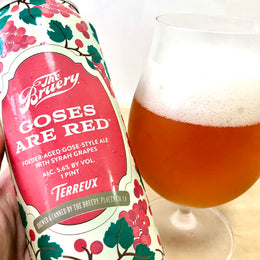
For decades, Singha had a dominant grip on the Thai market, but in 1995, a new competitor emerged - Chang.
The name "Chang" comes from the Thai word for "Elephant", an animal that is held sacred and with great respect in Thailand. As you can see on the can, its logo is that of two elephants facing one another across a fountain. I suppose the two elephants are friends given the brand's tagline "We Brew Friendship".
The Chang brand came as a result of Thai Beverage's founder, Charoen Sirivadhanabhakdi's desire to tap into the lucrative Thai beer market, having seen Singha's success. He was already at the time running other alcoholic ventures in Thailand and with his industry experience and having partnered Carlsberg, he was ready to launch the Chang brand in 1995, brewed in the Ayutthaya region of Thailand, located some two hours away from Bangkok.


Ayutthaya is an ancient and historic area in Thailand, sitting some 2 hours away from Bangkok. (Image Source: Bucketlistly Blog)
Charoen's rise to the top was a testament to his shrewd business acumen, pulling off many aggressive bets that allowed him to grow Thai Beverage into a behemoth. At one point in the late 1980s, Thai Beverage's royalties payment to the country's excise department would account for 5% of the entire country's national budget.
When it came to Chang, his acumen proved astute. He focused on producing a beer that was not only cheaper but also featuring the highest alcoholic content at the time. He topped it off with huge marketing campaigns, the flashiest of which was Chang's sponsorship of the Everton Football Club in the massively popular English Premier League. This was a lethal combination and quickly rocketed Chang to huge success, quickly snatching 60% of the local beer market by 2000, eclipsing even Singha.

ThaiBev sure knows how to create a strong beer and some much needed buzz. (Image Source: Football Shirt Culture)
Several events transpired during Chang's history, namely Carlsberg pulling out of a joint venture with Thai Beverage, and Singha's response to Chang with their more affordable Leo brand, as well as a consolidation of all Chang variants into a single Chang Classic label. Today, Chang vies for the top position with Singha, with various polls reporting Chang as either largest or second-largest.
Chang had used to keep their local Chang Classic beers at 6.4% ABV, adding rice to the mix in their ingredients alongside barley malt, and previously had variations such as Export, Draught and Light. Today all of that has been consolidated into a single Chang Classic that is kept at 5% ABV. At one point there were rumors that you could find Chang beers up to 10% ABV and even inspired the term "Chang-over" given the alcoholic kick.

Tasting Note
Color: Bright Gold
Aroma: Immediately more zesty - grapefruit and pomelo, with the usual barley notes. More hoppy bitterness develops over time here. It is not very sweet nor malty, and fairly bright and citrusy.
Taste: This has more body, it's sweeter as well but with more depth and is less bright. Overall richer, with more hoppy bitterness and a darker maltier flavor. Think honey oat biscuits with a side of peppermint.
Finish: Long, more bitter and hoppy, but with richer malt and darker honey.

My Thoughts
👍👍👍
This sits somewhere between Singha and Leo - it's intermediately heftier, sweet, malty and herbaceous. This was the winner for us as it was brighter than Singha whilst not substantially less creamy, and also packs more weight and flavor than Leo. That combination of a brighter profile and a good amount of flavor punch made it stand out amongst the three.
Our Thai friends told us that they find Chang less rich than Singha but also remarked that Chang is generally more well-liked by the international audience and perhaps more broadly has hammered alot harder on marketing and as such has more international awareness.

@111hotpot







